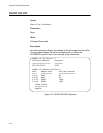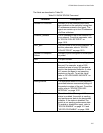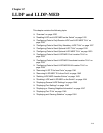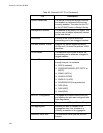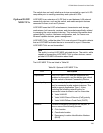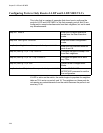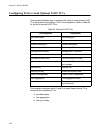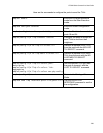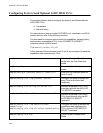
AT-9000 Switch Command Line User’s Guide
1023
The switch does not verify whether a device connected to a port is LLDP-
compatible prior to sending mandatory and optional LLDPs.
Optional LLDP-
MED TLVs
LLDP-MED is an extension of LLDP that is used between LAN network
connectivity devices, such as this switch, and media endpoint devices
connected to them, such as IP phones.
LLDP-MED uses the LLDP advertisement, transmission and storage
mechanisms, but transmits, receives, and stores data specifically related
to managing the voice endpoint devices. This includes information about
network policy, location, hardware configuration, and, for Power over
Ethernet-capable devices, power management.
LLDP-MED TLVs, unlike the other TLVs, are only sent if the switch detects
that an LLDP-MED activated device is connected to a port. Otherwise,
LLDP-MED TLVs are not transmitted.
Note
The switch is not an LLDP-MED activated device. The switch, while
capable of transmitting LLDP-MED TLVs to other devices, cannot
provide LLDP-MED information about itself.
The LLDP-MED TLVs are listed in Table 96.
Table 96. Optional LLDP-MED TLVs
TLV Description
Capabilities The LLDP-MED TLVs that are supported and
enabled on the switch, and the device type, which
for this switch is Network Connectivity Device.
Network policy The network policy information configured on the
port for connected media endpoint devices. The
switch supports Application Type 1: Voice,
including the following network policy for
connected voice devices to use for voice data:
Voice VLAN ID
Voice VLAN Class of Service (CoS) priority
Voice VLAN Diffserv Code Point (DSCP)
Location Location information configured for the port, in
one or more of the following formats:
Civic location
Coordinate location
Emergency Location Identification Number
(ELIN)




